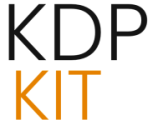
The Ownership Trap: The Conundrum of Intellectual Property and AI Output
This is where the conversation shifts from dollars and cents to lawyers and assets. A thorny legal and ethical question surrounds the service: Who owns the resulting translation? This isn’t a philosophical debate; it’s about what you can do with your derivative work tomorrow. The standard KDP terms are fairly straightforward for the original work: they grant Amazon a nonexclusive, irrevocable license to distribute the original work worldwide. You retain copyright. It’s like letting someone stock your book on their shelf—they can sell it, but they don’t own the master copy. The problem is that the specific terms governing AI-generated *derivative works* are not yet clearly addressed in the public-facing documentation provided during this beta phase. Authors need absolute certainty regarding who legally owns the copyright to the Spanish or German text created by Amazon’s engine.
The KDP Select Exclusivity Question
Consider this scenario: You use Kindle Translate to generate a Spanish version of your novel.
- Option A (KDP Select): You enroll the Spanish edition in KDP Select. You are bound by the 90-day digital exclusivity agreement. Amazon controls distribution, and you reap the benefits of Kindle Unlimited (KU) exposure in that market.
- Option B (Wide Distribution): You decide *not* to enroll the Spanish edition in KDP Select. Can you legally take that AI-generated Spanish version and sell it on Apple Books or Kobo in Spain?. Find out more about Kindle Translate post-beta subscription models.
- A Separate, Lower Royalty Rate: Amazon could institute a lower rate, say 50% or even 40%, for AI-translated editions. The justification would be the “lower cost of production” compared to a human translation. If the rate is diminished, the financial incentive to utilize the service, even if it offers broader reach, is fundamentally altered.
- A Service Fee Deduction: Amazon might calculate the author’s share *after* deducting a service fee that covers the machine learning compute time, even if the service is currently free in beta.
- Level 1: Raw Kindle Translate Output (Fastest, Cheapest, Highest Error Rate).
- Level 2: Post-Edited Translation (Faster/Cheaper than Full Human, Higher Quality than Raw AI).. Find out more about Kindle Translate post-beta subscription models tips.
- Level 3: Full Human Translation (Slowest, Most Expensive, Highest Quality).
- Translate your *lowest-performing* title first. This is your true stress test, as the stakes are minimal.
- Use the preview function extensively. If you don’t speak Spanish, hire a native-speaking friend or colleague for a one-hour review session to check major plot points and cultural gaffes—this is an inexpensive insurance policy.. Find out more about Kindle Translate post-beta subscription models strategies.
- Document your time spent versus your initial sales lift in the new market. This data will be gold when you negotiate your long-term strategy.
- External Tool: Translate manuscript > Reformat file > Upload new file > Set new pricing > Publish.. Find out more about Kindle Translate post-beta subscription models technology.
- Kindle Translate: Select language > Click “Translate” > System formats > Publish.
- Increase overall time spent reading within the Amazon ecosystem.. Find out more about Royalty structure for AI-generated Kindle book editions technology guide.
- Bolster the perceived value of the Kindle Unlimited subscription service with a dramatically expanded international catalog.
- Financial Clarity is King: Until Amazon releases the post-beta pricing, treat any translated title’s future profitability as a major unknown. Do not commit your entire backlist.
- IP is the Wild Card: Do not assume you have full, unrestricted copyright over the AI-generated text until the Terms & Conditions are updated to specifically address AI derivatives. Assume the most restrictive interpretation is possible.
- Quality is a New Cost Center: Budget for—or at least investigate—the cost of post-editing. Raw AI translation is unlikely to be high-quality enough for premium markets. A $100 post-edit on a Spanish edition that sells 500 copies is a far better investment than a $0 profit from a poorly translated book that yields negative reviews.
- Embrace the Beta: Use the free period to test your books’ reception in Spanish and German markets. Focus on gathering concrete sales data over time, not just initial curiosity spikes.
If the generative process grants Amazon *some form* of co-ownership, or at least a more controlling interest over that *specific derivative language edition*, then opting out of KDP Select might be impossible or illegal under the terms of service you agreed to by using the tool. Does the act of generation grant Amazon rights beyond simple distribution of the original text? Resolving this intellectual property ambiguity is paramount for authors to feel secure in feeding their core creative assets into the machine. Until Amazon clarifies whether the output is 100% your property, or if the license for the original text implicitly covers the AI-generated derivative work in a way that favors Amazon’s control, you are operating in a gray area.
The Remuneration Maze: Navigating the Unclear Royalty Split for AI Editions
Hand-in-hand with ownership is the question of royalties. This is where the simple math of “more reach equals more money” gets complicated. Will the translated editions command the same standard royalty rates—either the 35% or the 70% tier—as the original English manuscript? We know that standard KDP eBooks have two tiers: 35% for books priced below $2.99 or above $9.99, and 70% for books priced between $2.99 and $9.99 (though a recent change reduced the 60% print royalty for lower-priced titles, signaling Amazon’s sensitivity to operational costs). The alternatives for AI editions are chilling:
Authors are performing complex mental arithmetic right now, balancing expanded global reach against a potentially reduced per-unit profit margin. This calculation is impossible to finalize without official policy from Amazon regarding the long-term remuneration structure for these new content types. For authors who rely heavily on the 70% tier for profitability, a drop to 35% or a new 50% tier on international sales could significantly suppress their overall income stream, even if volume increases.
Concerns and Unanswered Questions for Early Adopters: The Beta Test Reality Check. Find out more about Kindle Translate post-beta subscription models guide.
The overarching theme for current beta testers, as pointed out by industry watchers, is the sheer absence of post-beta clarity. The risk is palpable: investing significant time—formatting, reviewing, and managing the launch of several translated titles—only to find the future cost structure or royalty arrangement makes the effort economically unviable in the long run.
The Quality Gap: The Inevitable Rise of Post-Editing and Localization Services
Amazon’s tool aims for autonomy, but let’s be realistic: pure machine translation, especially for creative works, introduces errors, misinterprets idioms, and fails to capture localized cultural context. It’s “good enough” for discovery, perhaps, but not for a five-star review. Industry experts consistently note this reality. This failure point immediately spawns a new micro-economy: the need for highly skilled human editors specializing in AI output correction. This creates a new middle tier in the translation market:
Authors who lack fluency in the target language but wish to publish a high-quality, error-free version will now need to contract these post-editing specialists. If you’re a successful author, you’ll need to factor the cost of a professional Level 2 edit into your overall international publishing strategy, effectively reintroducing a cost barrier, albeit a smaller one than before. This is an opportunity for language professionals willing to adapt their workflows to this new technological reality.
Practical Precaution: The Time Investment Risk
If you are a beta tester, treat every translated title as a *pilot project*. Do not go all-in on your entire 20-book backlist until Amazon locks down the three main variables: subscription fee, royalty split, and IP ownership. Actionable Step for Beta Testers:
Broader Industry Ramifications and Future Trajectory: Amazon’s Grand Strategy
The launch of Kindle Translate extends far beyond the KDP author community. It carries significant weight for the global book trade and competitive technology markets. Amazon is not just making authors happy; they are executing a classic vertical integration strategy.
Competitive Positioning: Against DeepL and Google Translate
Amazon is entering a space already occupied by powerful, general-purpose AI translation engines like DeepL and Google Translate. On pure linguistic capability for general text, those external services might still hold an edge, or at least offer broader language support or more granular control over algorithms. However, Kindle Translate’s competitive edge is its seamless, end-to-end integration within the world’s largest e-book retail and distribution platform. It removes the transfer steps necessary when using external tools:
They cannot compete with the sheer convenience of having the translation appear instantly formatted and ready to sell directly on the point of sale—Amazon.com. This vertical integration is Amazon’s signature play to secure market dominance in every facet of publishing. For comparison, you can see how companies like Amazon leverage their cloud infrastructure to support new media products, a pattern seen in recent AWS announcements.
The Multilingual Ebook Market Opportunity: Cornering Global Growth
The fundamental justification for this entire initiative is the massive, visible opportunity gap in the global marketplace. Amazon is positioning itself to capture the fastest-growing segment of the e-book economy: non-English language content. They note that currently, less than 5% of titles on Amazon.com exist in more than one language. This is an enormous untapped market. By rapidly flooding its international stores with officially labeled, instantly accessible translations, the platform aims to:
This aggressive expansion into multilingualism is an attempt to corner the next wave of digital reading growth globally. They want KDP to become the default starting point for *any* author aspiring to international readership, regardless of their original language of composition. They are betting that convenience and reach will outweigh any initial quality reservations held by a segment of the sophisticated readership—a bet that is driving significant interest across all media outlets tracking this developing story. You can review resources on general KDP success strategies to see how this new reach might integrate with your existing sales funnels.
Final Counsel: Securing Your Foothold in the AI Translation Era
Today, November 8, 2025, we stand at the precipice. Kindle Translate offers an undeniable shortcut to global presence, but shortcuts often come with hidden tolls. Your primary objective between now and the end of the beta period must be risk mitigation through information gathering.
Key Takeaways and Critical Checklist
The future of publishing is here, and it speaks multiple languages—instantly. Kindle Translate is the most powerful tool self-published authors have ever been given to access global readers. But like any powerful tool, you must understand the operating manual—especially the parts they haven’t published yet. What is your biggest hesitation about using Kindle Translate right now? Are you jumping in with your flagship title, or are you waiting for the financial and legal fine print? Drop your thoughts and any early beta results in the comments below—let’s navigate this new landscape together.








